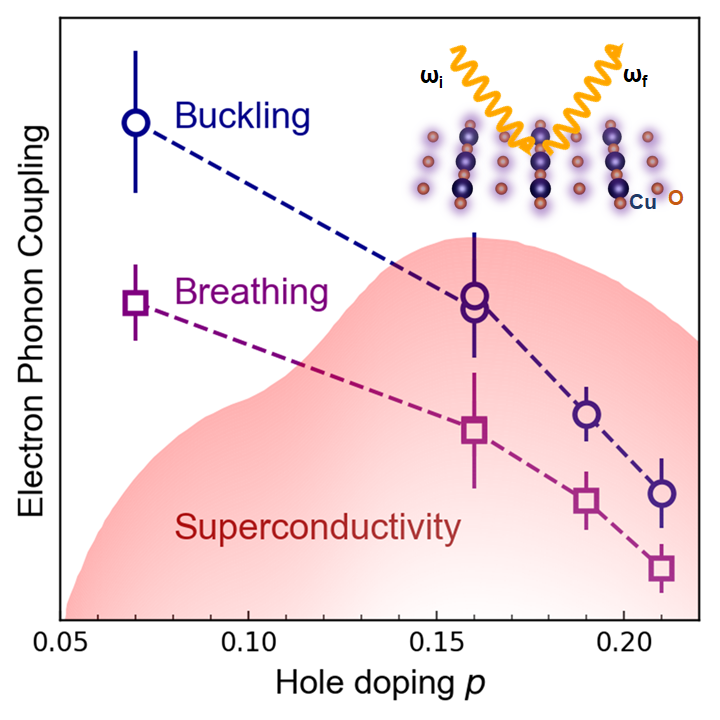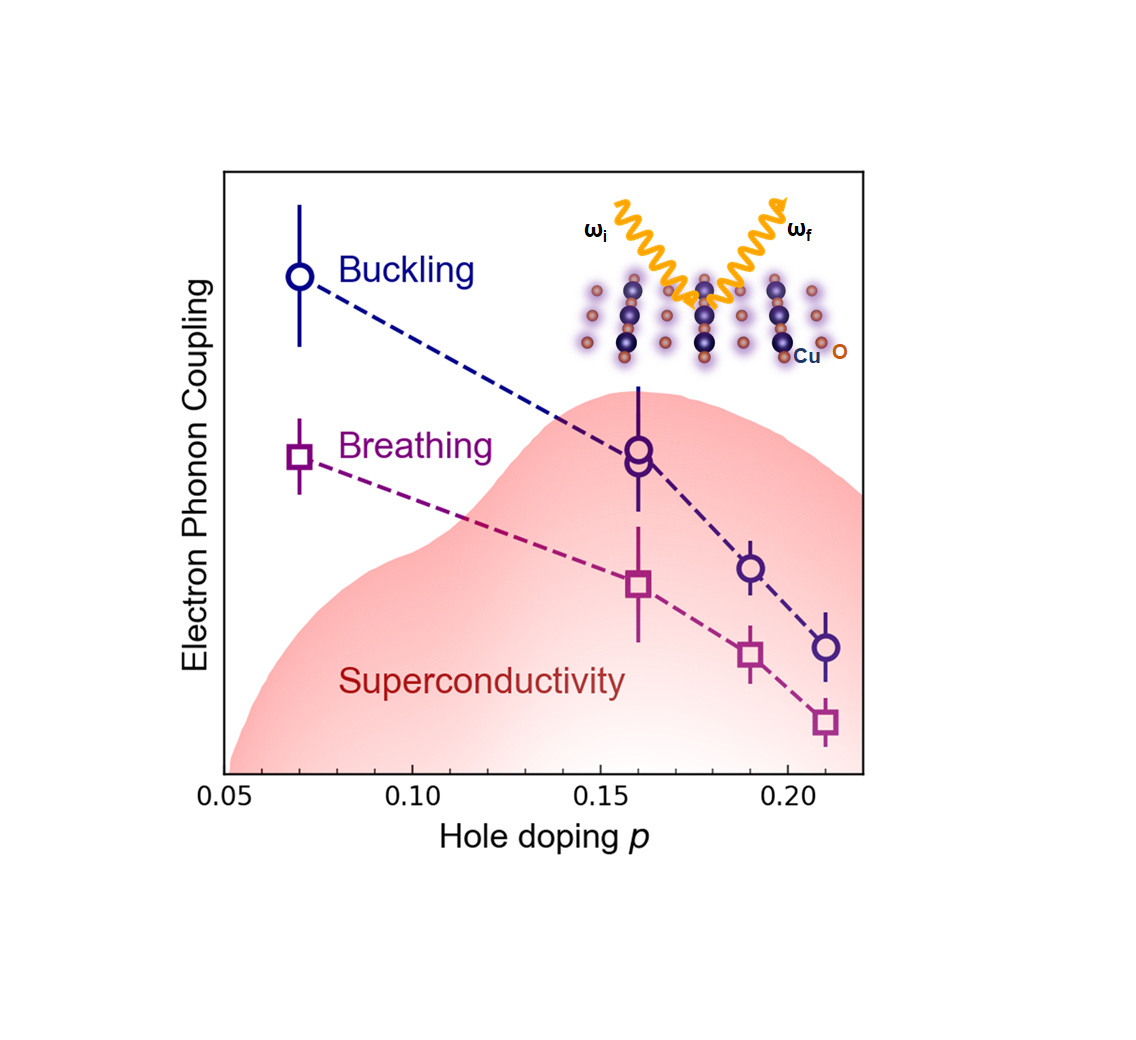While electron-phonon coupling (EPC) is crucial for Cooper pairing in conventional superconductors, its role in high-TC superconducting cuprates is debated. Using resonant inelastic x-ray scattering at the oxygen K edge, we study the EPC in Bi2Sr2CaCu2O8+δ(Bi2212) and Nd1+xBa2-xCu3O7-δ(NBCO) at different doping levels ranging from heavily underdoped (p=0.07) to overdoped (p=0.21). We analyze the data with a localized Lang-Firsov model that allows for the coherent excitations of two phonon modes. While electronic band dispersion effects are non-negligible, we are able to perform a study of the relative values of EPC matrix elements in these cuprate families. In the case of NBCO, the choice of the excitation energy allows us to disentangle modes related to the CuO chains and the CuO2 planes. Combining the results from the two families, we find the EPC strength decreases with doping at
q∥=(−0.25,0) r.l.u., but has a nonmonotonic trend as a function of doping at smaller momenta. This behavior is attributed to the screening effect of charge carriers. We also find that the phonon intensity is enhanced in the vicinity of the charge-density-wave excitations while the extracted EPC strength appears to be less sensitive to their proximity. By performing a comparative study of two cuprate families, we are able to identify general trends in the EPC for the cuprates and provide experimental input to theories invoking a synergistic role for this interaction in
d-wave pairing.
PhysRevB.105.115105 (2022)



Comments are closed